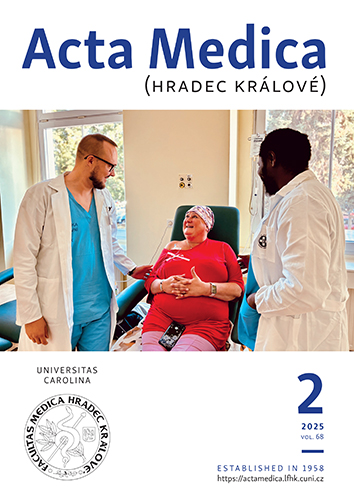ACTA MEDICA, Vol 66 No 1 (2023), 24–27
The Sex Ratio at Birth Is Higher in Māori Than in Non-Māori Populations in Aotearoa New Zealand
Victor Grech
DOI: https://doi.org/10.14712/18059694.2023.11
published online: 26. 06. 2023
abstract
Aims: The sex ratio at birth approximates 0.515 (male : total, M/T), with 515 boys per 485 girls. Many factors have been shown to influence M/T including acute and chronic stress. Increasing maternal age is associated with a decline in M/T. In Aotearoa New Zealand, circa 15% of the population identify as of Māori heritage. This populationis generally considered to be socioeconomically disadvantaged. This study analysed M/T for Māori and non-Māori M/T births in Aotearoa New Zealand and relates these to mean maternal age at delivery. Methods: Live births by sex and maternal age at delivery were available from the website of Tatauranga Aotearoa Stats NZ for 1997–2021. Results: This study analysed 1,474,905 births (28.4% Māori) Pooled data shows that Māori M/T is significantly higher than non-Māori M/T (chi = 6.8, p = 0.009). Mean maternal age at delivery was less for Māori mothers but this was not statistically significant. Conclusions: Several studies have shown that M/T is decreased in socioeconomically deprived populations, and for this reason Māori M/T is expected to be lower and not higher than non-Māori M/T. A lower mean maternal age at delivery might have explained the M/T differences noted in this analysis but this was not a statistically significant difference.
keywords: humans; sex ratio; New Zealand; age; maternal; native Hawaiian or other Pacific Islander

The Sex Ratio at Birth Is Higher in Māori Than in Non-Māori Populations in Aotearoa New Zealand is licensed under a Creative Commons Attribution 4.0 International License.
210 x 297 mm
periodicity: 4 x per year
print price: 150 czk
ISSN: 1211-4286
E-ISSN: 1805-9694
